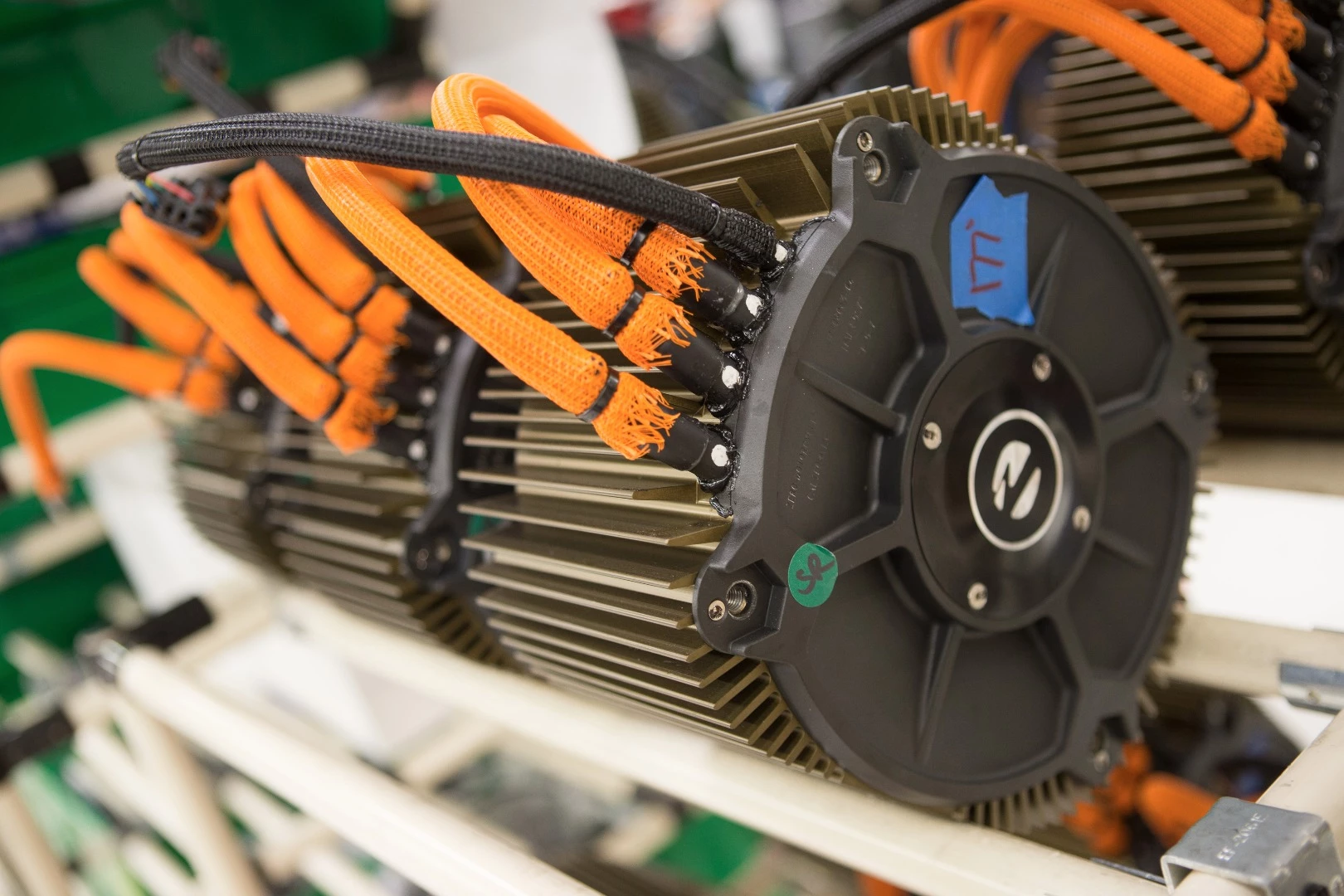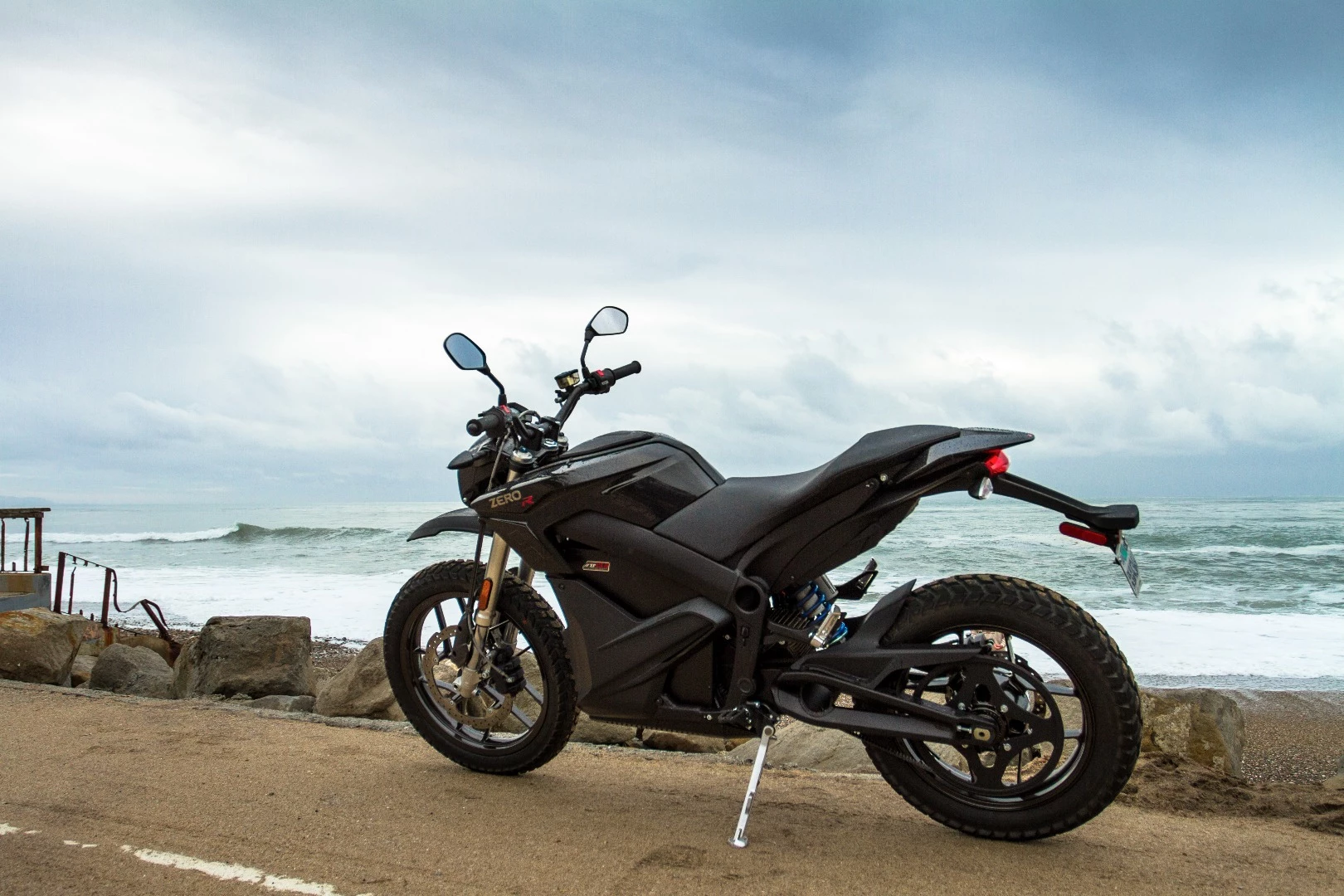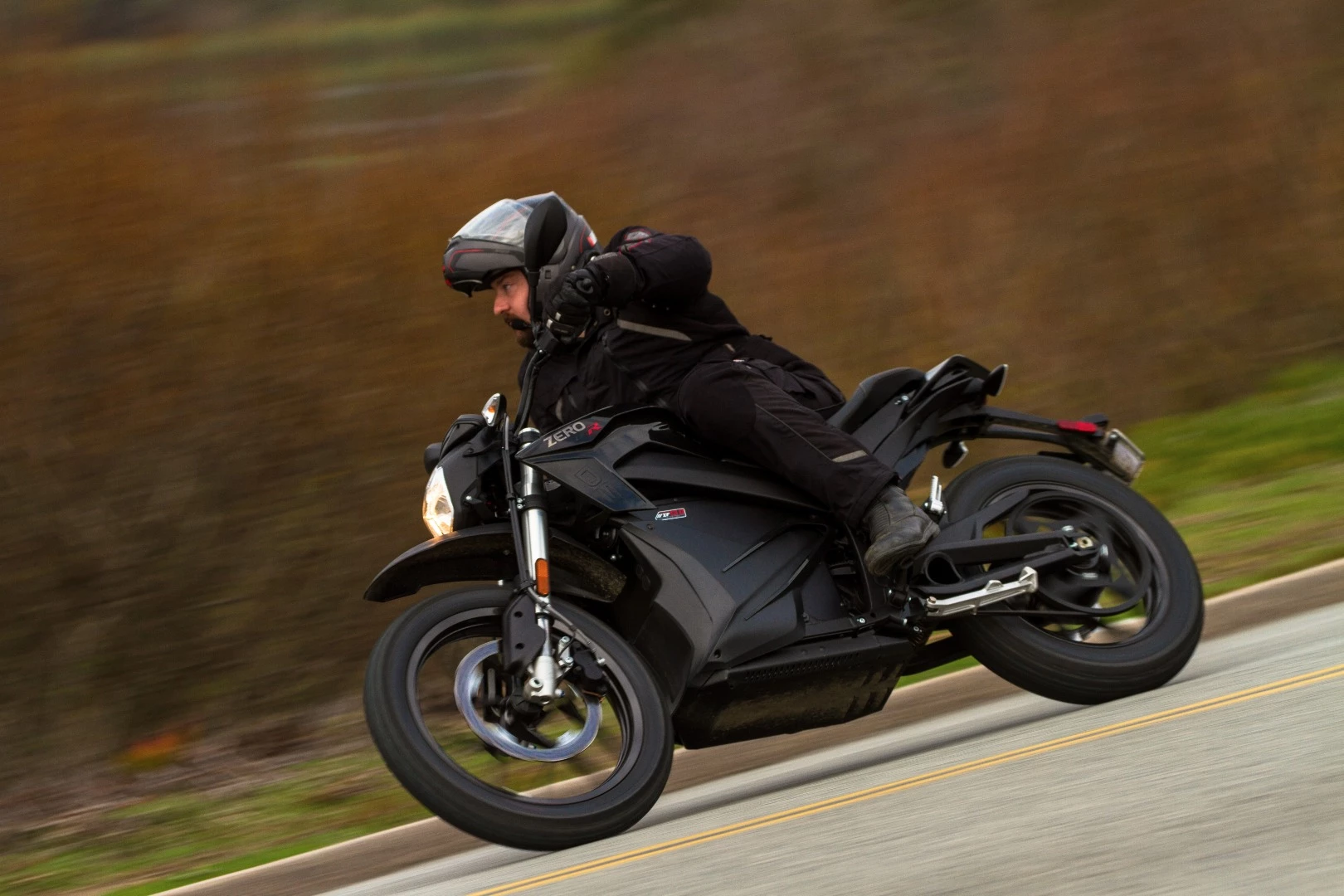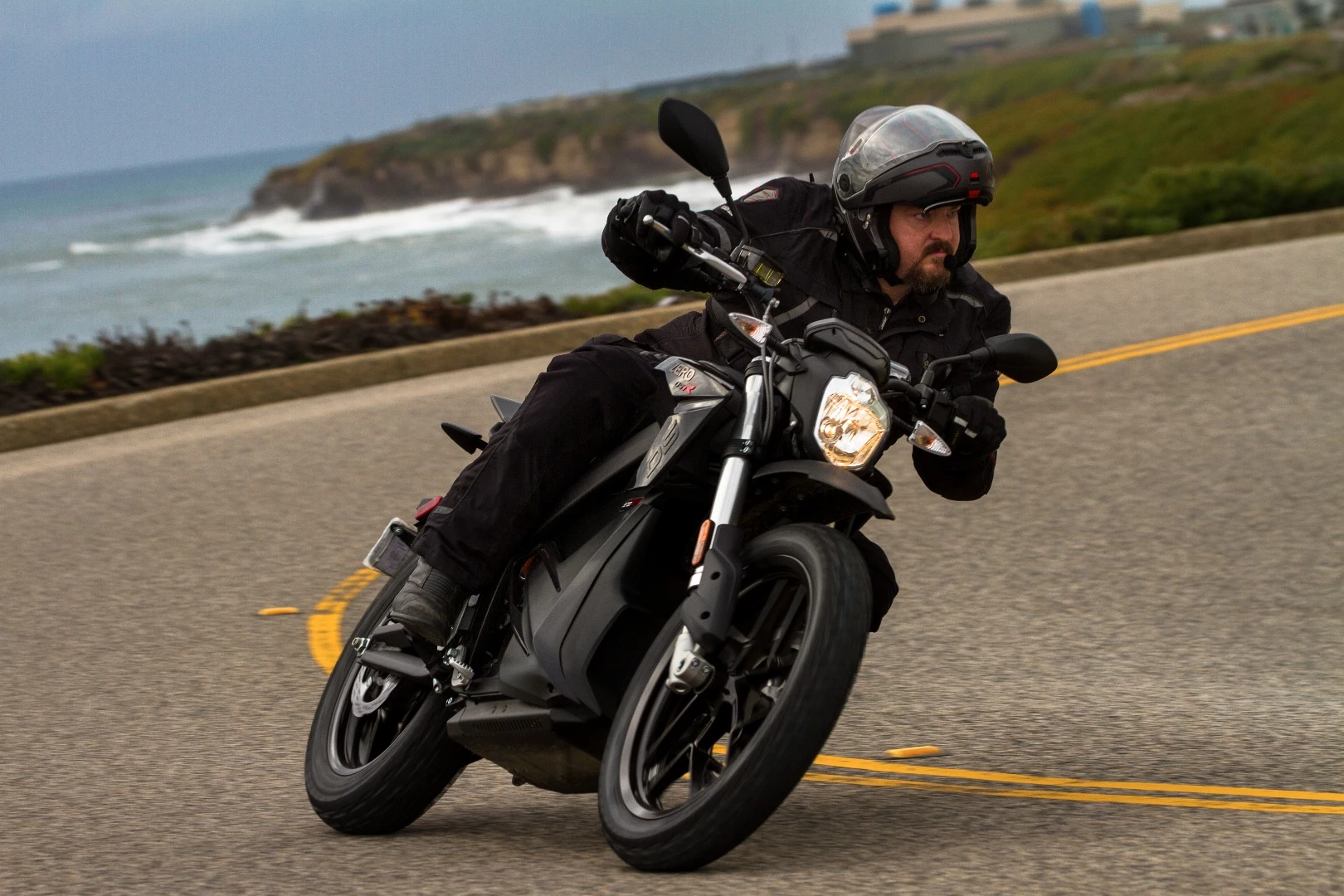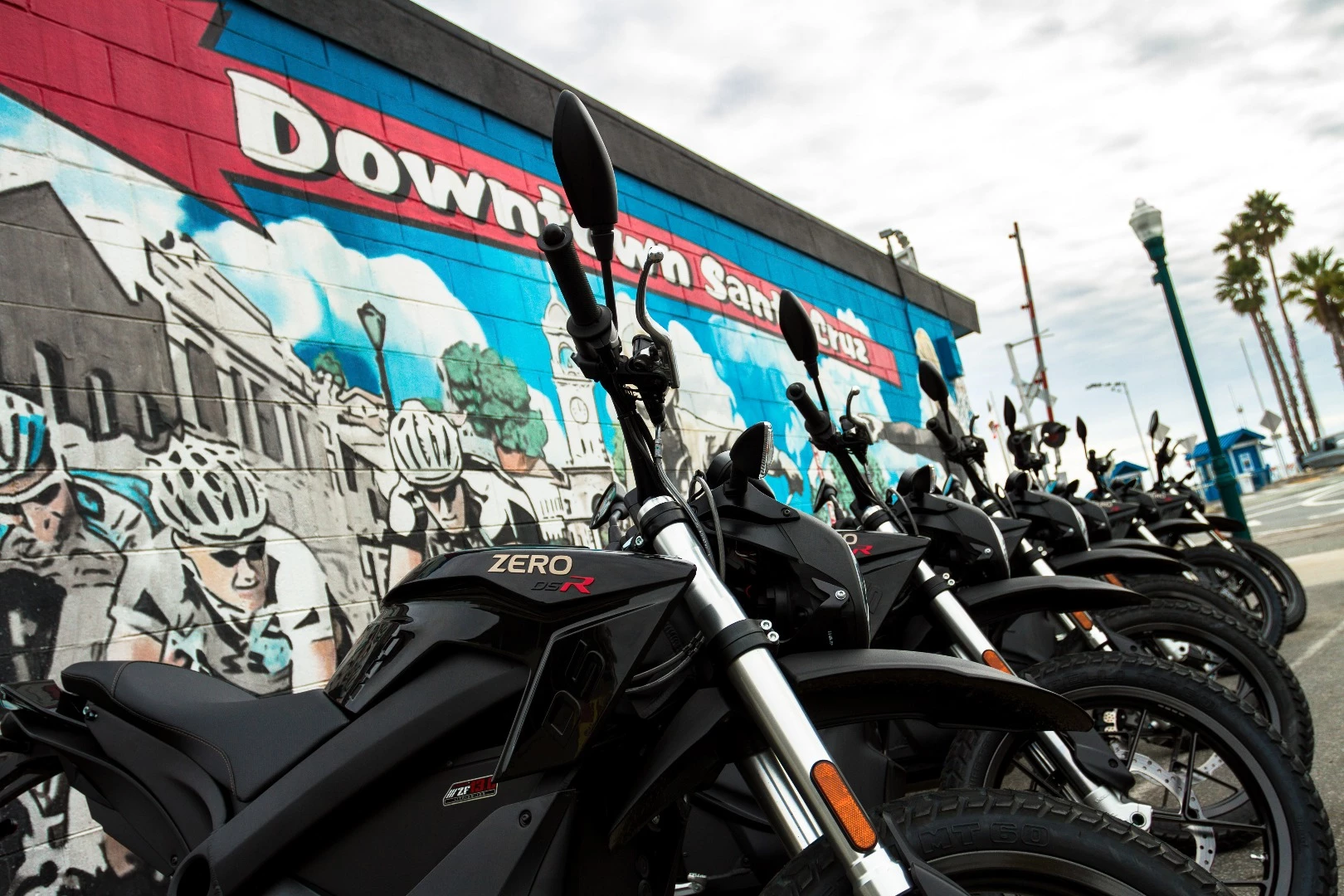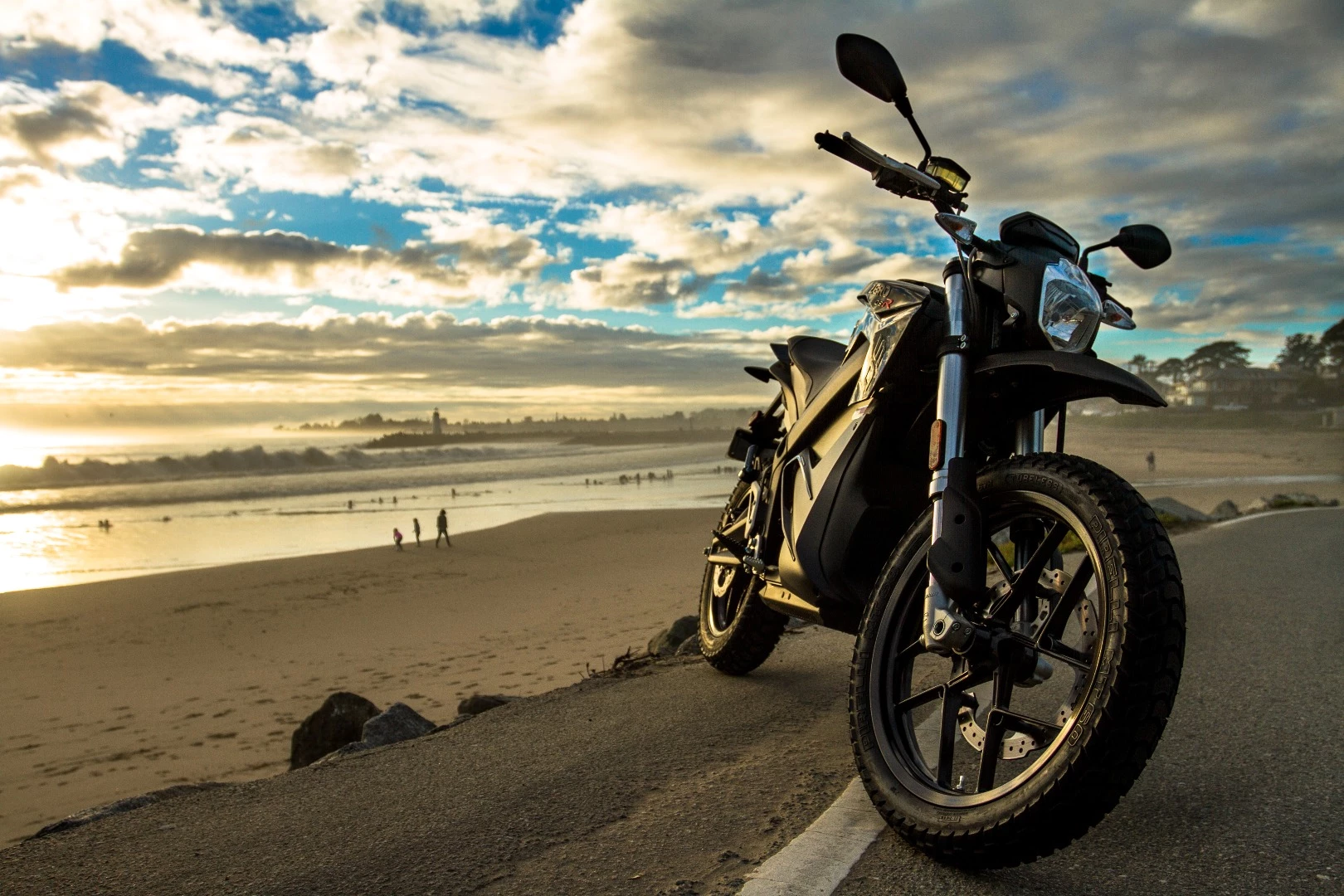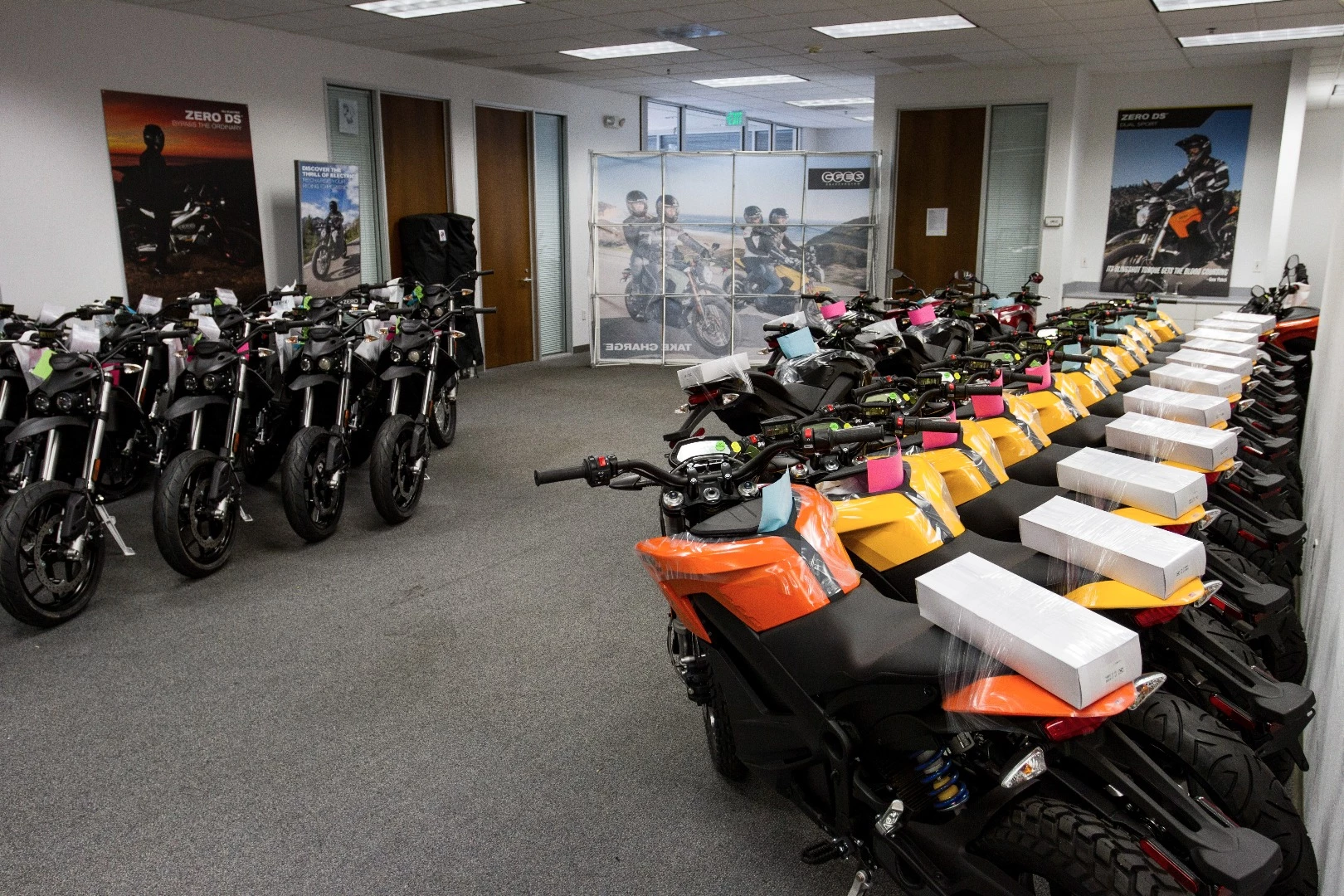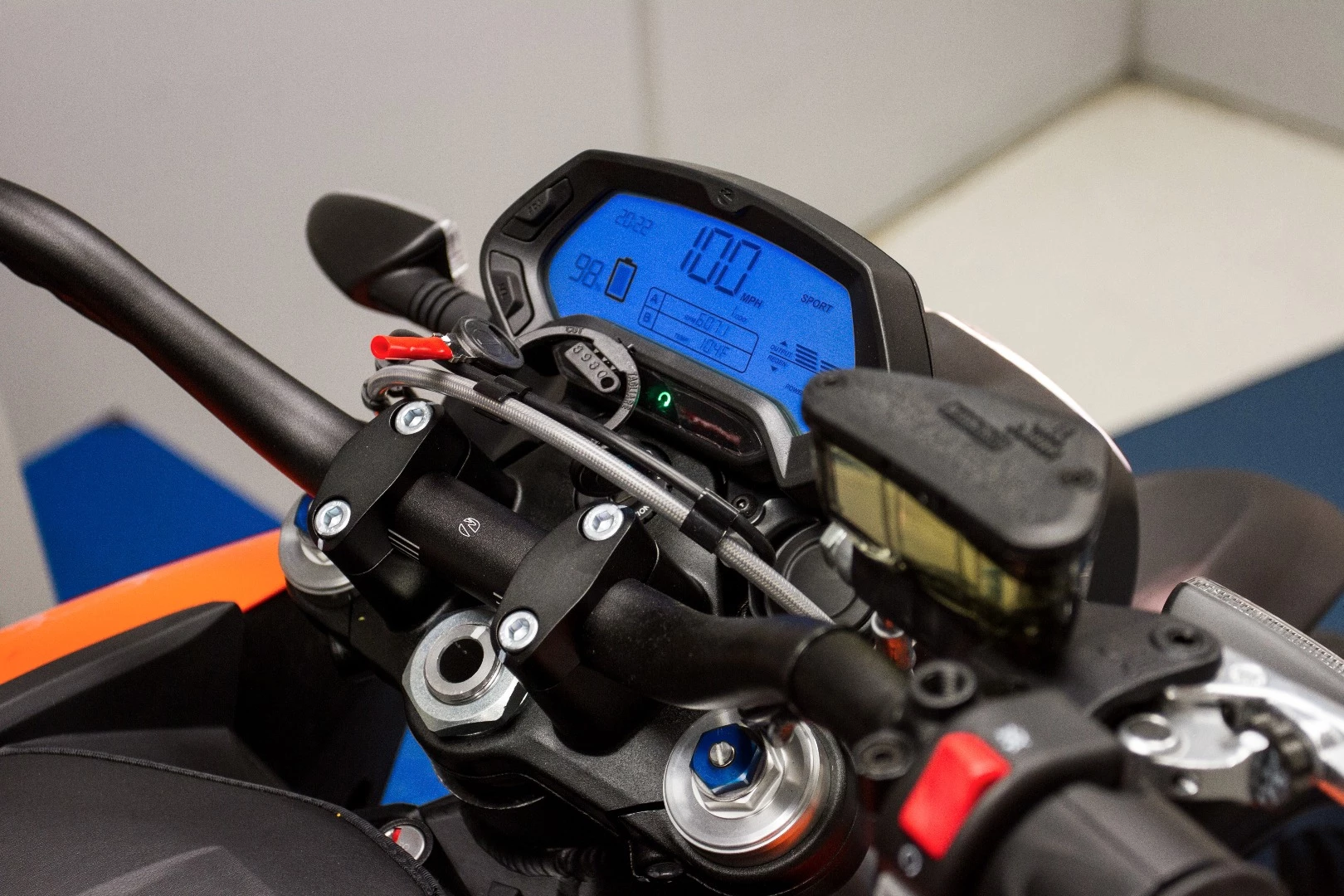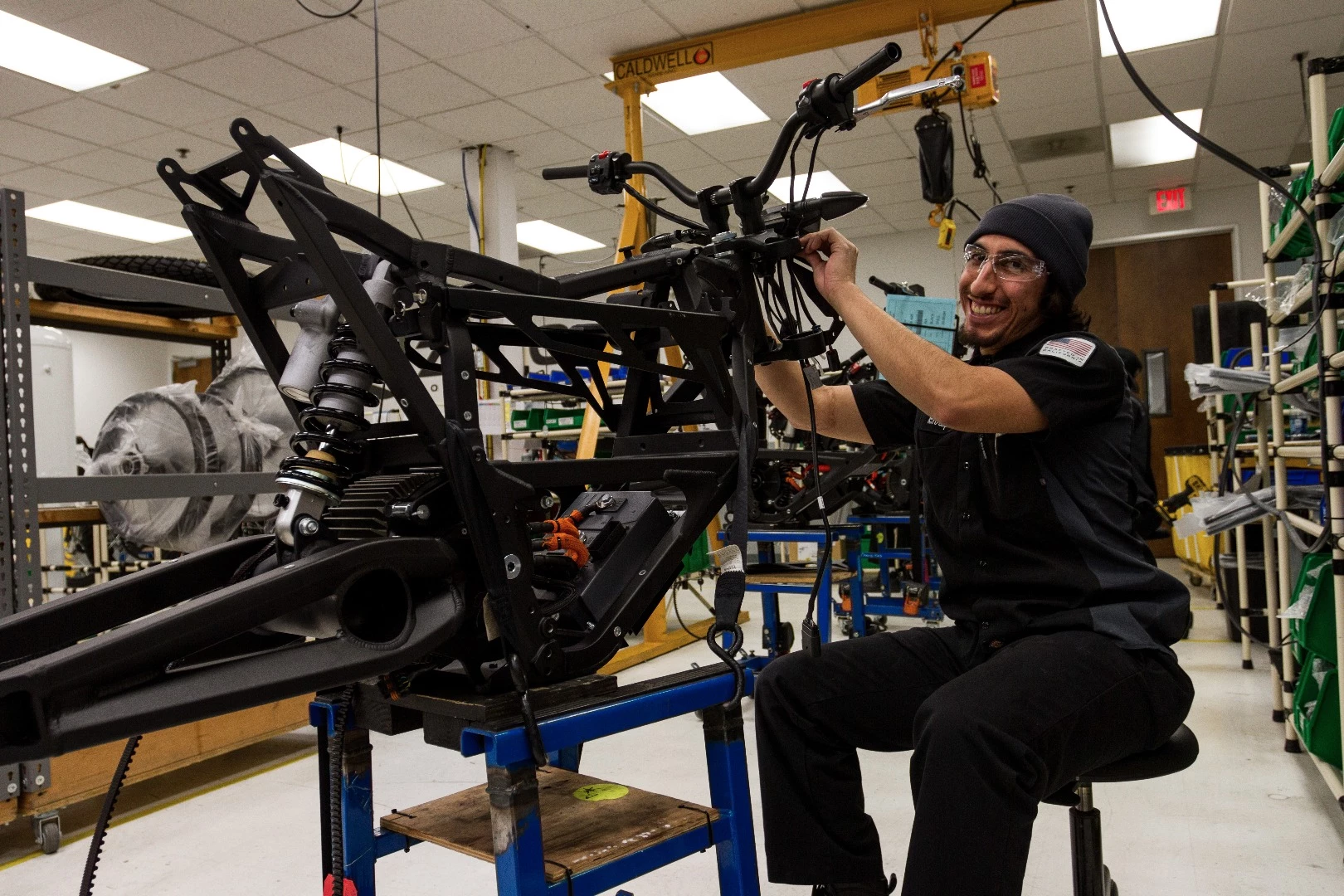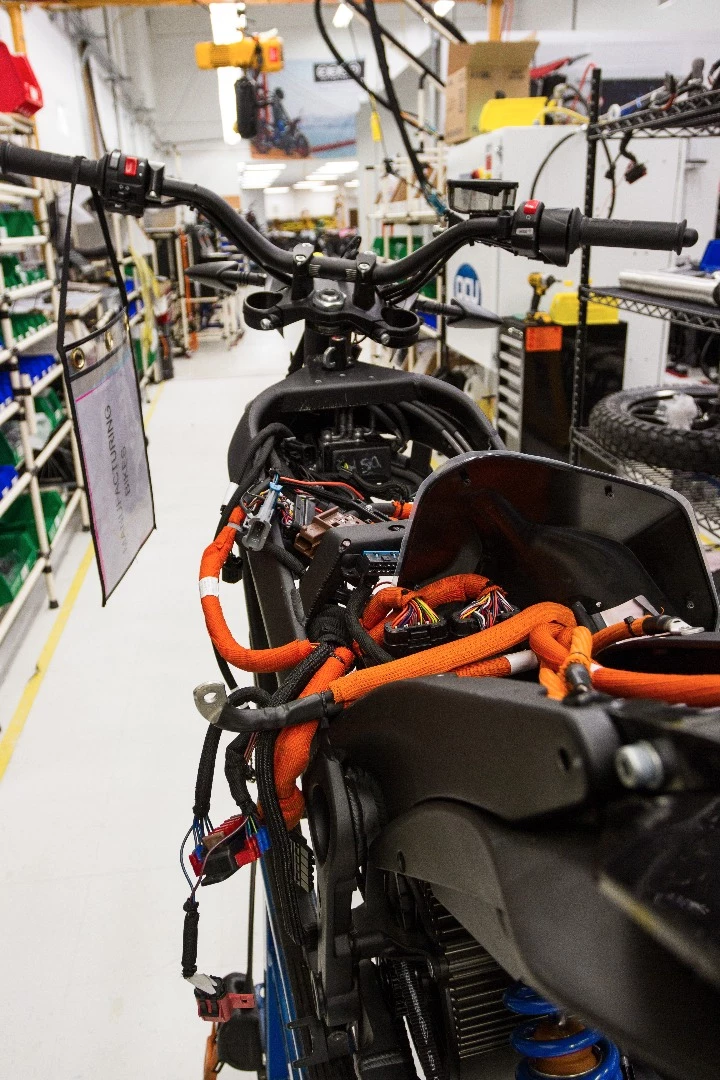Zero Motorcycles has made evolutionary changes to its silent but deadly 2016 lineup, with improvements to battery chemistry, range, efficiency and heat management. There's also two new models – the FXS supermoto and the DSR (above), a dual sport platform that now features the full splendour of the high-power SR motor and powertrain. Gizmag visited Zero in Santa Cruz, California, to catch up with the team and check out the new toys.
A Zero Motorcycles launch is the perfect excuse to visit beautiful, sunny Santa Cruz, a fragrantly herbal hippie/surfie commune on the coastal cliffs of Northern California. Except it's been pouring down for weeks, as the strongest El Nino system on record moves to deliver precious inches of rain to the gasping Californian water tables. And I've just burned a hole in my waterproof pants on the exhaust of a custom Bonneville with a really cool headlight. Poo.
It's 2016, and Zero is still miles ahead of the pack as the world's only volume manufacturer of electric performance motorcycles. Polaris is taking a nibble with its purchase of the Brammo brand and a stock of Empulse bikes, and other marques are showing interest, but Zero is blazing ahead, refining designs and production techniques and putting bikes on the road.
In the wealthy, tech-centric bay area, electric motoring is no longer a novelty. The highways joining San Francisco and Oakland to San Jose, and across to Santa Cruz at the coast, are buzzing with Leafs, Volts, i3s and scores of Tesla cars politely driving themselves about the place. It generally takes skeptics about 2.8 seconds behind the wheel of a P90D in Ludicrous mode to realize how much fun electrics can be.
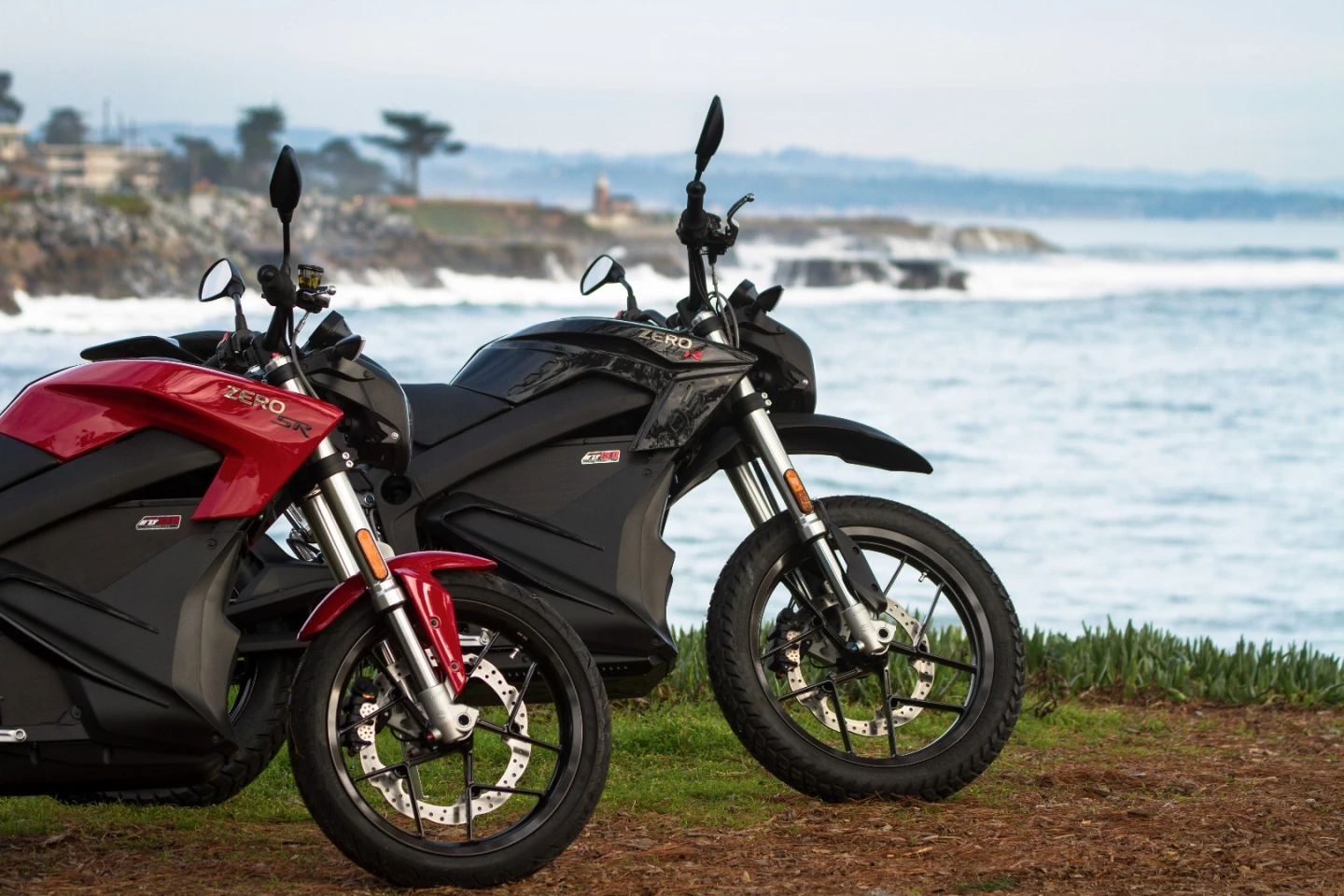
I never saw any Zero bikes in the wild on my last trip here in 2015, but this year I've already spotted four or five on the road, which is encouraging. Since I first rode the SR back in 2012, I've considered it just about the perfect fun commuter.
So what's new for 2016? Well, as we detailed last year, there's a new Internal Permanent Magnet (IPM) motor that's more efficient than the old one, and handles heat much better. There's a tweaked battery chemistry that nudges energy storage up by some 4 percent across the board and combines with the new motor to boost range by between 10 and 20 percent. There's a new J1772 Charge Tank accessory that triples your charging speed if you plug it in at a charge station, and there's two new models, the DSR and the FXS.
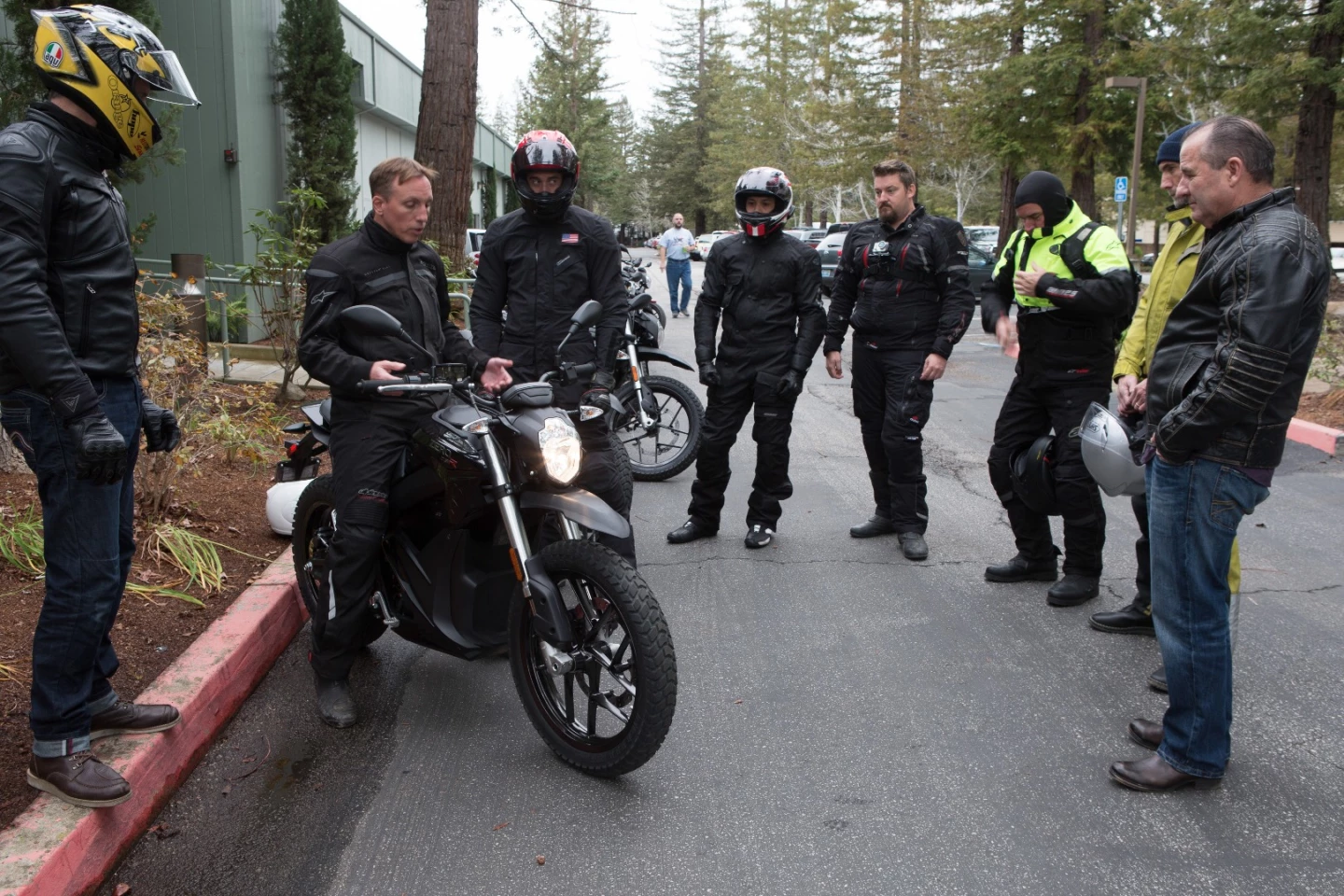
After another tour of the Zero factory at Scott's Valley, we set out on the DSR, which s effectively the eye-popping SR powertrain in the body of the DS dual-sport bike. I like it immediately; the SR's narrower bars and more compact stance don't suit my bulky backside as well as the wider, more aggressive riding position offered by the DS.
Without riding it back to back with last year's SR, my butt-dyno impression is that it swings just as hard, with a slightly more mellow response at the throttle. Given that the instant torque of last year's motor put at least one journo on his butt at the 2015 launch, that's probably no bad thing.
In fact, the excellent throttle response of Zero's electric bikes shines a harsh light on the jerky, inconsistent power we've learned to deal with on gas bikes, particularly as emissions laws have strangled their fueling and exhausts. The fact that this is only going to get worse will be a key advantage for electrics going forward.
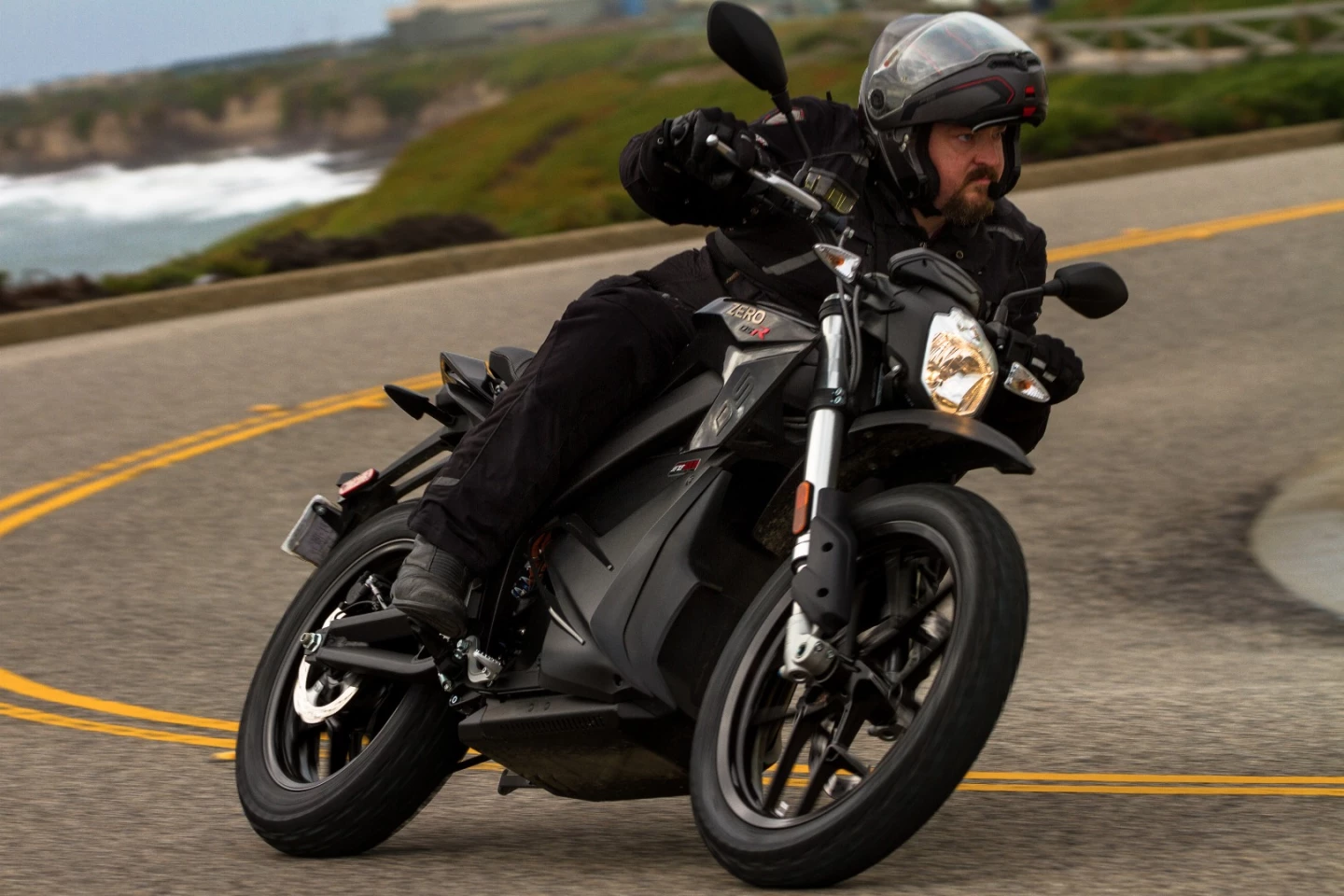
Don't try to judge electrics based on horsepower figures. The DSR's peak of 67 horsepower (50 kW) sounds underwhelming, but consider this: it makes 106 ft-lbs (144 Nm) of torque right through the rev range, which is the most you can get out of the barnstorming KTM 1290 Super Duke R at any RPM. That gives you a much better idea of the riding experience.
Rapid, hearty acceleration is available instantly, from any speed up to the DSR's limited top speed of 98 mph (158 km/h), although instant off-the-line acceleration feels like it's been tuned down. There's no gearbox, but abundant torque is on tap regardless of engine revs, so once you're off and moving it's as if you're always in the right gear anyway. Bounce it up off a bump in the road, and the DSR will happily wheelie away. That's beaut, I really like wheelies.
Road handling is good, although not as sharp as the SR. The DSR is slightly hampered by slower steering from the 19-inch front wheel and reduced edge grip from Pirelli MT-60 tires that aim to bridge the gap between road and light off-road action.
The benefit, then, is that it's a bit better in the dirt than an SR. Probably not a whole heap better, and certainly not as good as Zero's own FX bike, which is a lot lighter and features 21- and 18-inch spoked wheels. We rode the DSRs up and down a smoothly graded dirt road to get a quick taste of their capabilities, and while nobody had any complaints, none of the assembled journos were overly eager to throw them into the bush on a single trail or try jumping them. That's FX territory.

I felt the DSR made the most sense as a big, meaty streetfighter that suits a bigger, broader-shouldered rider than the SR. And I'd have no compunctions about scratching the D off the tank and fitting it with stickier street tires to get the most out of its powertrain and fun handling.
One issue I found with the DSR was its overly-active Bosch Gen 9 ABS system, which tended to intervene when it wasn't needed, and take too long to return control to the rider. To be clear, this isn't a Zero issue but one for Bosch, and I've felt similar problems on a number of bikes that use the same, very common system. It annoys and scares me to the point that I've pulled the ABS fuse out of my own bike, which also runs Gen 9 ABS, to permanently disable it.
This wasn't a problem for everyone and perhaps some suspension tuning to suit my "stocky" frame might help the tires adhere a bit better and the problem would go away. Or perhaps it's possible to train yourself to quickly let off and reapply the brakes in a bumpy braking zone. But isn't that what ABS is supposed to do for you? Either way, I haven't experienced the same issues with the Continental ABS system on, for example, the BMW S1000XR. Food for thought.

ABS aside, the J-Juan brakes otherwise do a great job reining the DSR in when you're rocketing quietly towards a corner. The single front disc is more than enough to lift the rear wheel under braking if you've got the ABS switched off, and the lever gives you decent feel.
Quoted range for the base model 13 kilowatt-hour DSR is about 10 percent less than the SR, presumably due to its wider stance making the rider more of a wind sock. It's still some 147 city miles (237 km), though, which is enough to smash out several days' worth of commuting for most people on a single charge.
Strangely, though, the stop-start-stop of city riding is where you'll get the best range from electrics. Much worse is high-speed sustained freeway riding, where the DSR drops to a 70-mile (113-km) range if you hold it at 70 mph.

Our morning blast out to Alice's restaurant was around 45 miles (72 km). I nudged top speeds around 90 mph (145 km/h) and generally laid the gumboot into it with as much full-throttle acceleration and hard braking as the soggy road conditions would allow. It was a use case far harsher than any SAE range test and by the time we pulled up at Alice's I was showing 26 percent battery. Motorcycle.com's vastly more compact Troy Siahaan went no slower and got there showing 40 percent.
There's an empty space where the fuel tank sits on a regular bike that gives you two different ways to address range. You can either fit a US$2,852 Power Tank accessory (an extra 2.9 kWh battery), or you can go with the new Charge Tank, which boosts your charging speed if there's a J1772 quick charge plug available.

The standard bike charges at a rate of about 10 miles (16 km) of range per hour on a regular 110V wall socket – a snail's pace best suited to overnight charging. Speccing up to include the $1,988 Charge Tank boosts that up to nearly 50 miles (80 km) of range per hour. So if there's J1772 infrastructure in your area, you'd probably get more value out of fast charging than you would out of the extra battery.
All in all, the DSR is a logical and welcome addition to the Zero range, and a fine bike to handle co-flagship duties with the SR. This year's mild range improvement is nice, and the new Z-Force 75-7R IPM motor feels almost exactly the same as the old one, while being cheaper to manufacture and much more up to the task of sustained high-speed riding in hotter conditions. None of the journos on this test experienced any kind of thermal limiting, as expected, but it was a fair bit colder than last year's launch, so you'd probably only be able to tell the difference on a racetrack anyway.

So 2016 is a year of refinement for Zero, despite the fact that they already make the highest density and most weatherproof battery pack in all of electric vehicledom, and the best performing e-bikes being made in any numbers.
When big-time motorcycle manufacturers decide the market's mature enough for a serious push into electrics, they're going to have to work very hard to catch up with this feisty little company from Santa Cruz.
Check out our review video below!
Product Page: Zero Motorcycles














